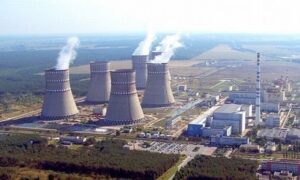
National Nuclear Generating Company Energoatom plans to sign an agreement with the French operator of nuclear power plants Electricite de France SA (EDF) on cooperation in the development of nuclear energy, Head of the company Petro Kotin has said.
“Today, we are preparing a memorandum with EDF on cooperation in the development of nuclear energy in Ukraine and in the world. A lot of issues are being worked out there regarding the current operation of units, equipment modernization, personnel training, as well as the development of nuclear facilities in the future. Now we have provided them with our version of the memorandum, they are considering it,” Kotin said in a commentary to Energy Reform during a visit to the Central Spent Nuclear Fuel Storage Facility.
He said he met with Head of EDF Jean-Bernard Levy at a nuclear exhibition in Paris (November-December 2021), where it was agreed on the need to establish cooperation.
According to Kotin, it can become fruitful and profitable for both companies.
“EDF is the world’s largest operator of nuclear power plants. If we produced 86 billion kWh last year, which is the highest result in the last six years, then they produced 360 billion kWh. But we are the second in terms of electricity production in Europe, except for the Russian Federation,” the head of Energoatom said.
At the same time, he admitted that cooperation with EDF could eventually extend to the development of small modular reactors in Ukraine.
“Now this issue is dealt with by many companies, all large organizations that have expertise in this area. Some have conceptual solutions at the stage of coordination with regulatory authorities, many are still at the concept stage,” Kotin explained, adding that “the horizon for the use of small modular reactors is another six-eight years.”
As reported with reference to Deputy Head of the President’s Office Rostyslav Shurma, Ukraine plans to cooperate with French EDF, in particular, in the construction of new units of nuclear power plants (NPPs) in the country.
EDF operates more than 70 nuclear reactors, including 58 in France, and is among the world’s largest nuclear power plant operators. In addition, EDF owns stakes in generating companies in many European countries, the USA, Brazil, Chile, Mexico, China, India, and Morocco.
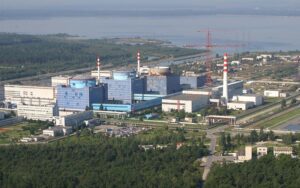
Westinghouse (the United States) and National Nuclear Generating Company Energoatom have signed two cooperation agreements providing for the start of projects for the construction of two new reactors at Khmelnytsky NPP using AP1000 technology.The documents were signed during the international conference Atomic Opportunities for National Development on Monday in Kyiv.As an Interfax-Ukraine correspondent reported, one of the agreements provides for the purchase of services from the U.S. company for the design of reactors, the other for the purchase of a simulator and equipment with a long service life.According to Petro Kotin, Acting President of Energoatom, the purchase of the simulator in advance will make it possible to train personnel long before the reactors are put into operation.”AR 1000 is a new technology for us. Right now we need to start training inspectors so that they can then start training personnel. We don’t want to waste time on this later, so we buy the simulator first of all,” Kotin said.In addition, the agreement provides for advance financing of equipment that has a long manufacturing cycle.”This is done in order not to delay construction. Some equipment has been manufactured for about three years,” the head of Energoatom explained.Kotin added that the agreements with Westinghouse also provide for the preparation of pilot projects for the construction of reactors, in particular, the preparation of infrastructure and testing of the site where they will be located.In turn, as Minister of Energy Herman Haluschenko said, the agreements signed with Westinghouse are extremely important, since the AP 1000 reactors are unlicensed in Ukraine.”I would not like the licensing issue to drag on. And this is a huge work, it is necessary to process a colossal array of documents. Therefore, we do everything as quickly as possible. And we received assurances from the U.S. side of their as much as possible assistance,” Haluschenko said.As reported, within the framework of the September visit of the President of Ukraine to the United States, Energoatom and U.S. Westinghouse Electric signed a memorandum on the construction of a total of five reactors in Ukraine. The cost of the project will be about $25 billion.
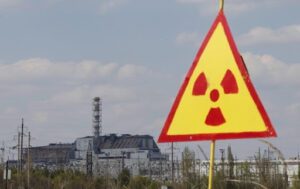
From 2023, Ukraine will have to store vitrified products of spent nuclear fuel reprocessing (high-level radioactive waste HLW) from Rivne, Khmelnytsky and South Ukraine nuclear power plants. Some time ago, the National Atomic Energy Generating Company ‘Energoatom’ sent this fuel to Russia.
This waste was recycled, and some of the radioactive materials suitable for reuse in industry or other fields were left behind. Unsuitable materials processed to an acceptable level of radiation safety will return to Ukraine.
The recycled waste should enter Ukraine in 2023. By this time, a special storage facility should be built in the Chornobyl zone, the construction of which should begin after the completion of tender procedures. The total amount of the contract for the construction of the storage facility exceeds UAH 4 billion.
According to the representatives of the Public Council under the Ministry of Ecology and Natural Resources of Ukraine, the construction of the repository is taking place not only in violation of the deadlines set by the project documentation, but also in violation of current legislation.
According to the intergovernmental agreement, the start of import of vitrified HLW from the Russian Federation to Ukraine, after processing and aging, is scheduled for early 2023. First, HLW will come from the processing of nuclear fuel from NPPs with WWER-440 reactors (pressurized water power reactor delivering 440 MW of electrical power).
That is, it will be the return of recycled fuel from the Rivne NPP, because such reactors are located there. The amount of such waste is 260 cubic meters. And from 2025, HLW from the processing of nuclear fuel from Ukrainian nuclear power plants with WWER-1000 reactors will be imported. That will be the waste from spent and reprocessed fuel of Khmelnytsky and South Ukraine NPPs.
In total, not only 590 cubic meters of such HLW will return to Ukraine, but also more than eight thousand cubic meters of intermediate-level radioactive waste. In order to safely store this waste, three storage facilities must be built on one construction site, though.
In 2009, a law was passed, according to which the construction of each particularly dangerous nuclear facility – a new nuclear power plant or research reactor – takes place after the adoption of a separate law for each new facility.
This was done in order to ensure a wide discussion and involvement of people’s deputies in the adoption of such a serious decision. The same rule applies to repositories intended for the storage of spent nuclear fuel or high-level radioactive waste with a design shelf life of more than 30 years. This is exactly the case.
According to environmentalists, holding tenders for the construction of storage facilities in the absence of legislation is unacceptable. On August 11, 2021, the State Specialized Enterprise “Central Enterprise for Radioactive Waste Management”, which is under the management of State Agency of Ukraine for Exclusion Zone Management, for the fourth time announced a tender “Construction of a storage facility for intermediate storage of high-level waste (HLW), which will return from the Russian Federation after the reprocessing of spent nuclear fuel of Ukrainian NPPs.”
The representatives of the Public Council also stressed that the approved project of the repository (held in 2019) without proper legal grounds is another gross violation of applicable regulations.
Given the current state of the issue and taking into account the need for additional research, the development of technical specifications for equipment important for radiation safety and their coordination with the State Nuclear Regulatory Inspectorate of Ukraine (SNRIU), the construction may begin no earlier than 2023.
That is, even in the case of compliance with the design terms of construction (24 months) acceptance of HLW WWER-440 can begin no earlier than 2026. Besides, if we take into account the experience of construction of SNFS-2 (storage of spent nuclear fuel of “dry” type – a facility designed to receive, prepare for storage and direct storage of spent fuel assemblies and spent additional absorbers that have accumulated at the Chernobyl NPP, built in 2001- 2020), it is generally difficult to determine clear deadlines for the completion of construction.
In addition, according to environmentalists, there is a problem of insufficient funding for the construction of storage facilities for HLW. In accordance with current regulations, such storage facilities are financed from the State Fund for Radioactive Waste Management of Ukraine, which is replenished by ‘Energoatom’ at the expense of the environmental tax. In January-December 2020, the environmental tax amounted to UAH 1,015,004 thousand. At the same time, the estimated cost of the object is UAH 4,112,739,805 in 2019 prices (which will increase as of 2022 and in subsequent years due to inflation and rising resource prices). Even if the environmental tax will be accumulated only for the construction of the storage facility, at the end of 2023 the State Fund for Radioactive Waste Management will have funds in the amount of UAH 4,060,018,508.72, which may negatively affect the project completion dates.
As a way out of the situation, the following can be suggested:
First, it is necessary to recognize the existence of the problem at the state level.
Secondly, urgently consult with experts and the expert community.
Thirdly, promptly adopt the relevant law, conduct a qualitative environmental impact assessment, rewrite the terms of the tender, and so on. To do this, the National Security and Defense Council must work – this is clearly a problem of national security. And the Parliament. And the President who can file the law mentioned above.
According to https://greenpost.ua
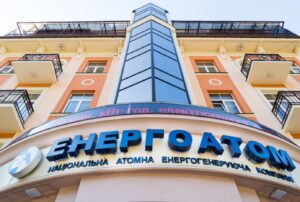
Energoatom in the first half of 2021 received UAH 1.124 billion of net profit against UAH 2.651 billion of net loss in January-June 2020.
According to the company’s financial statement for the first half of 2021, its net income from product sales decreased by 9.4% compared to the same period in 2020, to UAH 24.011 billion, gross profit – by 2.8 times, to UAH 2.734 billion.
As follows from the notes to the interim financial statements of Energoatom, as of June 30, the total amount of accumulated losses of the company stood at UAH 43.511 billion, having decreased since the beginning of the year by 1.5% (by UAH 638.570 million).
The positive net worth of Energoatom as of the indicated date increased by 8%, to UAH 130.554 billion.
The document lists a number of positive factors that contributed to the improvement of the company’s financial indicators in the first half of the year. One of them is an increase from January 1, 2021 of the ceiling price at which Energoatom sells electricity to state-owned company Guaranteed Buyer for the needs of the population from UAH 10 to UAH 150/MWh.
In addition, from February 1 to April 9, Guaranteed Buyer repaid UAH 4.125 billion of debt to Energoatom by attracting loans from state banks to Ukrenergo.
Another positive factor is the forecast electricity balance for 2021 approved by the Ministry of Energy of Ukraine. It provides for an increase in the production of electricity by nuclear power plants by 2.08% (by 1.533 billion kWh) compared to 2020, to 75.233 billion kWh.
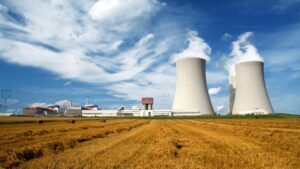
Nuclear Power Plants (NPPs) of National Nuclear Generating Company Energoatom in January-June 2021 generated 42.1 billion kWh of electricity, which is 6.8% more than in the same period last year (39.4 billion kWh).
“Some 42.1 billion kWh were generated, which is 54.2% of the total electricity generated in Ukraine. In 2020, the share of electricity generated by Energoatom was 51.4%. The electricity generation target has been fulfilled by 106.6%,” Energoatom said on its website on Thursday.
As the company said, Energoatom managed to produce 1.6 billion kWh out of 2.7 billion kWh of additional electricity volumes in the first half of the year by reducing the time for scheduled preventive maintenance at NPPs by almost 75 days.
The installed capacity utilization factor (ICUF) of NPPs amounted to 69.9%, which is 5 percentage points more than in the first half of 2020.
The volume of funding for capital expenditures of Energoatom amounted to UAH 5.1 billion, which is 40.2% more than the same indicator for January-June 2020 (UAH 3.66 billion).
Among the most significant projects in the first half of the year, the company noted construction and preparation for commissioning of the Central Spent Fuel Storage Facility (CSFSF), completion of the first stage of splash pools of the South-Ukraine energy complex, construction of a radioactive waste processing complex at Khmelnytsky NPP, as well as construction of the Vilcha-Yaniv railway track with a length of 43 km, which will connect the CSFSF with the railway network of Ukraine.
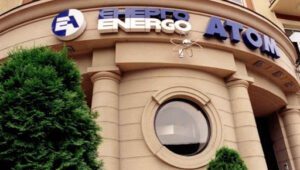
Head of National Nuclear Generating Company Energoatom Petro Kotin and Senior Vice President for Commercial Operations at Westinghouse Electric Company Elias Gedeon have discussed cooperation in the construction of new NPP units in Ukraine using AP1000 reactors.
According to the press service of Energoatom, in particular, during the negotiations held in Kyiv on June 29, the parties agreed to create a joint working group.
Energoatom said that the use of the American AP1000 technology – a next Generation III+ double loop reactor with a capacity of about 1100 MW, the design of which has fewer components, and standardization and licensing of which help to reduce the construction time and cost – in the long term will enable the company to provide a high level of safety and reliable operation of nuclear generation and respect for the environment.
As reported, Energoatom and Westinghouse have been cooperating since 2000 in the supply of nuclear fuel.